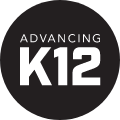
The applicant tracking and hiring process can be cumbersome, especially in the public school sector, where human resource teams are working with minimal staff and constrained budgets.
By developing a blended hiring process made up of equal parts strategy and technology, you can find the best candidates for your school while simultaneously relieving the administrative burden. In this article, we will review some of the best practices from K-12 administrators and HR leaders throughout the country.
Step 1: Define Your Workflow
The Role of Strategy
The first step to an effective workflow is ensuring you have one – and that it reflects your current hiring goals. While your central office surely has a series of steps and procedures in place, there is not always consistent, position-based, and clearly defined logic behind those steps. By engaging in continuous workflow review, you can ensure your applicants and internal stakeholders are receiving the notifications and updates they need at every key milestone throughout the hiring process. This time period is usually a candidate’s first direct experience with your district and a disjointed, poorly communicated application workflow can lead to diminished perceptions and withdrawn interest.
The Role of Technology
Your hiring software should provide event-driven updates to managers, HR staff, and applicants in multiple ways, including a job portal status update and an external notification email. After all, any manual workflow, no matter how well-designed, is still constrained by the staff charged with ensuring a smooth flow. Sick days, busy seasons, and overlooked notices can gum up the works and create unacceptable delays. It can be helpful to determine how customizable your system’s workflow management is and whether or not you are being forced to reconcile your best practices with incompatible technology.Step 2: Tighten Your Timeline
The Role of Strategy
Research has shown that as a district’s hiring process drags out into the later part of summer, they are more likely to end up with a pool of less qualified applicants while the more qualified candidates accept job offers elsewhere (Levin & Quinn, 2003). A delayed and convoluted process can also lead to hiring managers desperately trying to fill positions at the last minute. These ingredients leave your district with a staff whose skills and attitude are not aligned with your strategic vision, leading to lower achievement, high turnover, and poor morale. Unless you are offering contracts by May, there's a good chance you are losing out on some of your better candidates.While larger districts are often hampered by forces outside of their control, it can never hurt for district leaders to sit down and identify the factors that are negatively impacting their hiring turnaround times. Superintendents often have the power to change these factors for the better, or at least get the conversation started with the people who can. There may be a number of qualified and talented teachers who want to work in your district, but can’t afford to wait around long enough for you to extend a job offer. Make sure you are giving yourself the opportunity to bring the very best people on board.
The Role of Technology
Your hiring software should reduce applicant attrition, not only through the inherent efficiencies of automation, but also by playing an active role in communication and information gathering. The angst of “not knowing” is every bit as detrimental as a long, drawn out application process, even when actual turnaround times are relatively short. Make sure your applicant tracking system provides near real-time updates for every status change, so applicants are not stuck wondering “what’s next?” The amount of time saved on status phone calls alone will pay for itself over the course of a few hiring seasons.Multiple steps that once served as massive scheduling hurdles can be reduced to just minutes with some of the better hiring solutions on the market. New hire paperwork – from the application to background check authorization and skills questionnaires – can now be completed online, eliminating the need for candidates to make extra trips to your district’s central office. Find out if your HR software provider allows for the inclusion of custom forms to capture the information you are looking for right off the bat. Every day shaved is a top candidate saved in today’s education employment landscape – take the time to investigate whether your hiring process is running at peak efficiency.
Step 3: Narrow Your Scope
The Role of Strategy
In most cases, it is simply not feasible for you to interview every candidate, but you can take steps to ensure that the ones you do sit down with are the cream of the applicant crop. The New Teacher Project (TNTP) provides some helpful hiring resources, including a “selection model” to help administrators design the components of the hiring process that result in candidates that are the right fit. Take the time to identify the specific qualities you are looking for in your new hires and build the hiring process around those core characteristics.It has become common practice to include some form of assessment (carefully designed so as not to disadvantage any particular group) with the initial job application, and it can be helpful for district and building leaders to play a direct role in the design of both open and close-ended questions to narrow the scope of the candidate pool. In this case, the HR team will be the gatekeeper, and only those who have demonstrated alignment with the core competencies of the job will end up as finalists in the process.
The Role of Technology
Technology can help you find better candidates by providing a tool to rank applicants early in the process and identify those with the most promise while eliminating the worst fits for your district. Make sure your hiring software collects more than just basic demographic information. Can you include a skills self-assessment or customizable competency questions? Does the system assign numeric response values to candidates, or is a proficiency rating scale used instead? What steps will you need to take to map your applicant’s skills to the posted job requirements?Moving forward, it will come as no surprise when the K-12 market begins to incorporate some element of automated job simulation before an interview ever takes place. This technology is relatively new, but early implementations have been met with positive feedback. Simulations provide a more accurate assessment of a candidate’s competencies and characteristics than we could expect from any question and answer format, and automating the process will make it easier for HR staff and hiring managers to make decisions without the need for scheduled on-site meetings.
Step 4: Innovate Your Interviews
The Role of Strategy
Once you have narrowed your candidate pool to a select group of finalists, it is up to you to use the limited time and resources at your disposal to determine which of these qualified applicants will be most likely to generate positive outcomes for your students. In addition to interviews and teaching demonstrations, we have heard about schools using some interesting alternative approaches. Data-driven school districts, for example, might provide sample student data reports to their candidates and ask them to deliver a presentation to a small group. Those who are trying to pursue better family engagement may ask for a written parent communication sample and discuss it during the interview.From a legal standpoint, make sure you are using the same set of interview questions with every candidate for a particular position. School districts have been faced with discrimination lawsuits for not asking identical questions. Keep a reference guide handy at all times and stick to it as best you can.
The Role of Technology
Effective hiring technology will provide the flexibility you need to evaluate candidates using a wide variety of methods while maintaining all rubrics and supporting documents as part of the applicant record. Once again, if you feel like your hiring efforts are constrained by uncompromising technical capabilities, it is probably time to find a better solution. Custom forms are the key to innovative evaluations – your system should be able to store and report on information from any number of fields that you create to support your interview process.Step 5: Optimize Your Onboarding
The Role of Strategy
Keep in mind that the onboarding process represents your new employee’s very first impression of you and your district. Redundant paperwork, long lag times, and a lack of clear and timely communication can set the stage for disenchantment before your new teachers have even stepped foot into their classrooms. Where do teachers have to go to fill out their paperwork? How much paperwork is there? Are there any unnecessary steps in the process? When reviewing your hiring process, don’t neglect the final stage – that transition from “candidate” to “team member” is crucial and can save you thousands of dollars while ensuring that you convey a positive image to your new hires.The Role of Technology
The best hiring technologies will offer seamless transition from “applicant record” to “employee record,” minimizing redundancies and saving your HR staff countless hours of manual data entry, while facilitating a positive experience for new hires. In this day and age, there is no good reason for your applicant tracking software to not be tightly integrated with the rest of your ERP system. Find out what your current technical process is for onboarding – if it involves more than simply pressing a button to transfer information and create a new employee account, then you have room for improvement.---------
Hiring (and retaining) the right staff for your schools can be time consuming and expensive, but the long-term savings of an effective and efficient hiring process offers a significant return on investment opportunity for district leaders. Even the most advanced technology offers little more than flashy automation on its own, but when combined with thorough planning and a sound business strategy, it can be an invaluable resource.
WHAT'S NEXT FOR YOUR EDTECH? The right combo of tools & support retains staff and serves students better. We'd love to help. Visit skyward.com/get-started to learn more.

|
Advancing K12 Staff Edtech Thought Leaders |




